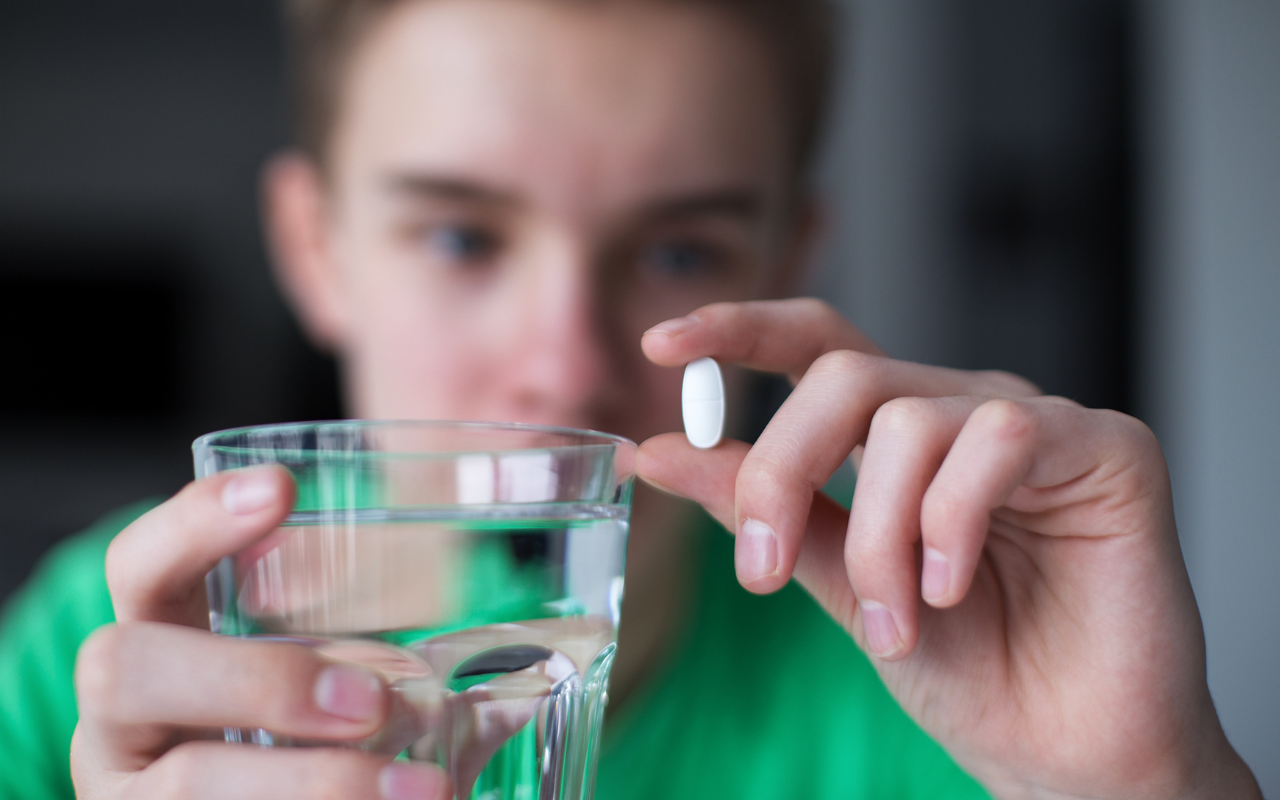The rise in prescribing and dispensing rates for psychotropic medications for children and adolescents cannot be entirely attributable to the pandemic, and further research is needed to learn why certain prescribing patterns have emerged.
Children and adolescents are being prescribed and dispensed more psychotropic medications than in previous years. This may be the result of the negative mental health impact of the coronavirus disease 2019 (COVID-19) pandemic; although the disruptive nature of the pandemic does not explain all observable trends.
Two studies published today in the Medical Journal of Australia have found that both prescribing and dispensing rates for psychotropic medications for children and adolescents is increasing over time. These medications included antipsychotic, antidepressant, psychostimulant, anxiolytic, and sedative and hypnotic agents.
Associate Professor Luke Grzeskowiak and colleagues from the Centre for Medicine Use and Safety at Monash University analysed the dispensing patterns of psychotropic medications using data from the Pharmaceutical Benefits Scheme. They found that the overall prevalence of psychotropic dispensing in young people almost doubled. In 2013, the dispensing prevalence was 33.8 per 1000 boys and 25.2 per 1000 girls in 2013, and this increased to 60.0 per 1000 boys and 48.3 per 1000 girls in 2021.

Associate Professor Grzeskowiak told InSight+ that these findings must be taken seriously. “In 2021 alone, it is estimated that one in ten young people across Australia aged 13–18 were dispensed one or more psychotropics,” Associate Professor Grzeskowiak said. His research revealed some unexpected findings that suggest the COVID-19 pandemic alone is not an explanation for increased dispensing of psychotropic medications for children and adolescents.
“We saw no differences in dispensing patterns when separating out New South Wales and Victoria from the rest of Australia. Given the stark differences in lockdowns, one could have expected the mental health burden to have been disproportionately felt across different regions, but the observed changes in psychotropic dispensing patterns appeared relatively consistent across Australia,” Associate Professor Grzeskowiak said.
“Further, the extent of the observed age- and sex-specific differences were not entirely expected. Prior to the pandemic the changes in dispensing were relatively similar across different groups, but during the pandemic most significant increases appeared among young girls aged 13–18 years.”
Although the findings from Associate Professors Grzeskowiak’s study were limited by a lack of prescribing data, a research letter also published today in the MJA by Dr Rae-Anne Hardie and colleagues from the Australian Institute of Health Innovation at Macquarie University showed that prescribing patterns followed the same trend.
Dr Hardie’s team examined general practice prescribing records from five primary health networks that included 660 practices. They found prescription rates for children and adolescents have been increasing for all psychotropic medications since 2018, with marked increases during the COVID-19 pandemic.
Dr Hardie told InSight+ that the findings were in keeping with the primary care experience early in the pandemic and that although there is no immediate cause for concern, we need to look further to know why certain prescribing patterns have emerged. “We hypothesised that we would see a rise in prescribing rates based on what GPs told us they were experiencing clinically and anecdotally; however, the scale of the increases in prescribing was perhaps unexpected, as the increases we saw were higher than predicted in most cases. This study provides strong evidence for what GPs flagged with us as a potential concern,” Dr Hardie said.
“Our findings of increased prescribing correspond with other reports of mental health concerns in children and adolescents during the pandemic, therefore GPs have likely prescribed based on actual need. However, the increase began (to a lesser extent) in the pre-pandemic period as well, so perhaps the reasons for this should be investigated.”
Further investigation is needed to better understand these trends, but the research findings of both studies are significant. “The results are of clear importance from a clinical and policy perspective, as they highlight the increasing burden of psychotropic use in children and adolescents, which has increased disproportionately during the COVID-19 pandemic,” Associate Professor Grzeskowiak said.
Dr Hardie felt that the increasing services and support is key moving forward, “greater access to mental health supports, including more support for general practice, where much of this care is being provided or coordinated through referrals. This would help not only during pandemics, but would likely still make an impact now, as the rise in prescribing was already evident to a smaller extent pre-COVID-19”.
Subscribe to the free InSight+ weekly newsletter here. It is available to all readers, not just registered medical practitioners.

 more_vert
more_vert
Thank you for your comments, Dr Wilson. We agree that these findings should be considered along with psychological treatment and over a longer period into the future. In Supplementary Table 2, we provide a breakdown of the most common medications prescribed in each category. Thanks again!
It is important to consider the potential impact of the pandemic on mental health literacy among parents and the potential outcomes of increased help-seeking behaviors among children and adolescents with mental health disorders. This increased awareness and seeking of help could lead to more children accessing the necessary support. It is particularly noteworthy as research indicates that nearly half of all children and adolescents with mental health disorders do not receive professional assistance. However, the surge in demand for services coupled with the limited availability of therapists, such as psychologists, has probably resulted in families being unable to find an available psychologist to support their child. As a result, they may have to consider alternative options such as medication. This has been my experience as a Paediatrician.
Interesting study which should be taken seriously. Would like to see the breakdown of which medications were prescribed- how much was the increase attributed to stimulants for example which might not be linked to the pandemic. A concern is that if the increase is mostly in antidepressants is it in lieu of psychological treatment. I would be interested in the increase of psychological services provided over the same time and are the people receiving the antidepressants also seeing a psychologist. I agree with Dr Hardie’s sentiments the youth(and all of us) need greater access to psychological interventions – whether from psychologists or elsewhere